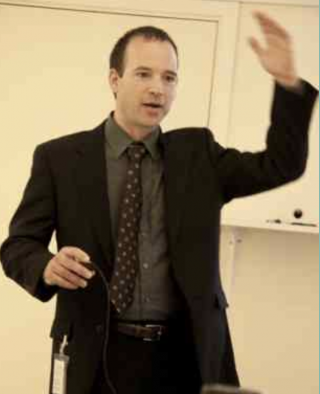
On the eve of Oregon’s new stops-as-yields (a.k.a. Idaho Stop) law going into effect, I was pleased to see Jason Meggs comment on our article on the topic last week.
Meggs is the transportation and urban planning researcher (more at JasonMeggs.com) who completed a respected study on the Idaho Stop law in 2010. His research was entered into the record of the Oregon Legislature and helped convince some lawmakers to support SB 998.
Here’s his comment:

(Photo: JasonMeggs.com)
Thanks for the article, and for mentioning the research I pursued. Thanks to all who have persevered! Epic and ongoing.
People may find my presentation from Velo-city Global 2012 (Vancouver, BC) useful in understanding the rationale for the Idaho Law, it synthesizes diverse sources in support of the Idaho Law as well as an estimate of the gains the law is expected to achieve. The history of stop signs and signals was eye opening for me to research, particularly the fact that most stop signs have no safety purpose even for cars – and there was never a study to justify lockstrapping bicycles to stop signs which were developed for the speed and convenience of driving motor vehicles first and foremost, not for safety.
Advertisement
I want to clarify that the 14.5% [reference to percent reduction in injuries after passage of the Idaho law] came from digging through old reports in Idaho, looking for any further data on the effect of the law. My original research looked at comparison cities and underlying rationale which led to a policy letter available to decision makers, a paper submitted to the Transportation Research Board, and presentations.
On the topic of signals, to clarify that in Idaho the update to the law there required stopping before proceeding straight or turning left; one may still yield when turning right. Previously it was ambiguous as to yielding to proceed through a red light signal. This change was motivated politically, not by any safety study. In future laws if this concern arises I would suggest considering differentiating between smaller intersections and larger intersections for red light signals, rather than completely prohibiting Idaho Law style yielding for red lights. The smaller intersections are more like a typical stop sign.
I like Meggs’ comment because he’s a noted authority on the topic, his comment gives readers a boost of inspiration, and it adds to our understanding of the topic.
If you want to better understand why this law makes sense, I highly recommend Meggs’ Velo-City presentation (PDF).
Thanks for reading Jason! And thanks for your ongoing work.
— Jonathan Maus: (503) 706-8804, @jonathan_maus on Twitter and jonathan@bikeportland.org
— Get our headlines delivered to your inbox.
— Support this independent community media outlet with a one-time contribution or monthly subscription.





Meggs on “Idaho Stop” is all PowerPoint rubbish.
This kind of psuedo-analytic presentation went out the window with the Columbia Space Shuttle disaster of 2003.
Read Edward Tufte’s “The Cognitive Style of PowerPoint: Pitching out Corrupts Within.”
“Idaho Stop” is orders of magnitude worse than the rationalization for “Vision Zero,” which at least had a comprehensible data set behind its hand-waving PR.
It is a mystery to me that JM, with his high intelligence and hard work, falls for these amazing stories of psuedo-science.
Jim Lee, you don’t know Tufte!
Tufte criticized the bulleted nature of one particular PPT presentation that played a part in the shuttle disaster. But Meggs doesn’t truncate his thoughts in the way the shuttle PPT did.
Tufte said PPT tends to promote truncated thinking, but Meggs’s PPT is not an example of it.
Your thinking is too simplistic: just b/c Meggs made a PPT presentation about the Idaho stop law doesn’t mean the Idaho stop law is flawed.
I would go one step further, and argue that unless there is strong data stating that an “Idaho Stop” legal framework for cycling is significantly more dangerous, it should be the law everywhere. Making cyclists conform to laws design for motor vehicles is silly, because motor vehicles and bicycles are very different.
And as a workflow analyst who does like standardization, I have to point out that not every input requires the same process; some things work better with fewer steps than others, simply because they are different.
Now that’s from an administrator perspective. A user might perceive another user with a different process as unfair, but that is a communication and expectations issue.
Chris I.
Idaho 49-720, the “Idaho Stop Law” was not created for safety, convenience or anything else. It was there because bicyclists weren’t following the law. So they changed the law.
It was updated to clarify the right turn after an accident caused some citation confusion for a police officer. Not ‘politically motivated’.
Last year the law was updated to include e-bikes, but still only covers human-powered vehicles.
Oregon botched it. I tried to read through the amended law and it is very confusing about what is allowed and how a the police can interpret it.
Why they couldn’t just adopt the very simple 49-720 as written is a bit of a head scratcher. It is not flawed as Mr. Lee suggests.
Perfect example of it.
Yes, Meggs does not “truncate his thoughts.” He should have. He goes on interminably, reaching nothing resembling a logical conclusion based on substantive facts.
Read Aristotle.
And the “Idaho Stop” law is inherently flawed of its own accord, with or without Meggs’ PowerPoint babble.
He took a crack at it here, and I couldn’t follow his argument.
https://bikeportland.org/2019/12/26/guest-post-how-oregon-got-idaho-stop-304016#comment-7250629
Tangientally related: I had an unexpected interaction with a Portland Police officer yesterday. I was bicycling in Old Town, southbound toward downtown from Union Station, stopped at a red light, on the left side of the street. A patrol car pulled up next to me on the right, and the officer addressed me through his open window: “Hey, just so you know: Starting today, you can roll through a red light like this, as long as you check first to make sure no one is coming.”
I was taken aback, and it took me a second to even process what he had said, since I had initially feared that he had spoken to me to take me to task for something, rather than offer friendly (and bike-friendly!) advice.
Once I processed his words, I still hesitated. I replied, “Are you talking about the Idaho Stop law? Because I’m pretty sure that applies only to stop signs, but not stoplights.”
He said, “No, red lights are OK too.”
I think I continued to look skeptical, and he continued with a smile,
“Hey, put it this way: None of *us* [he gestured to his car and uniform to indicate that he meant PPB officers in general] are going to give you any problem for rolling through a red light.” Then he added, “As long as you do yield–make sure to check first that no one is coming.”
I remained skeptical but appreciated what he said, so I smiled and said thanks, then rolled through the now-green light.
Having read this article/comment, and double-checked the law, I’m now still convinced he was mistaken in his interpretation of the law… but it sounds like his perception of how the bureau intends to approach it is in a very pro-bike way.
Just wanted to share this anecdote, FWIW.
Fascinating anecdote. I agree with your interpretation.
And this is one of my biggest fears. People (and officers) being confused by a non-“standard” law. So few REALLY know what the law says. Going to take a pretty substantial education campaign to get even half the public on the same page.
This is basically every law, we have a fractured system of traffic codes resulting in over 50 different sets of rules nationally. Ray and I discussed trying to get something into the next round of DMV driver’s manual/testing to help push the message out there, and I fully support increasing the frequency and difficulty of driver testing, at the same time I don’t think it is a reason not to move forward with this good idea. There are now 4 states that allow the idaho stop and I think it is likely that more than half of America will live in a state that allows the idaho stop within the next decade.
SERider, the only people who need to understand the law are the riders and LEO’s. The vast majority of driver’s really do not need to understand the law as the entirety of responsibility to yield within the framework of the law falls upon the cyclist.
Maren, great anecdote! That is the way that 49-720 is written, but somehow the Salem law didn’t work out that way. I’m glad to hear that at least some Portland police officers understand the laws intent.
Roundabouts are TERRIBLE for people on foot. Anyone doubting that should walk around the Chavez/Glisan roundabout. Anyone advocates for them is prioritizing throughput over people’s lives.